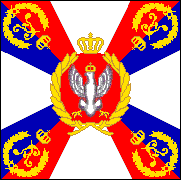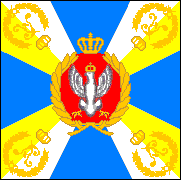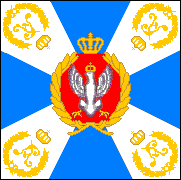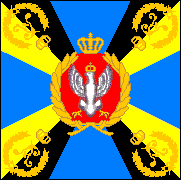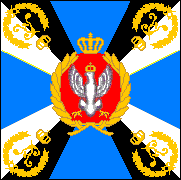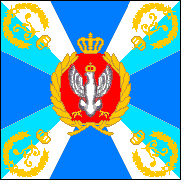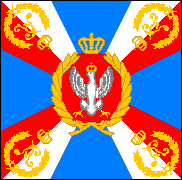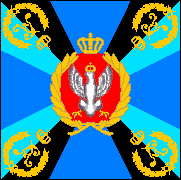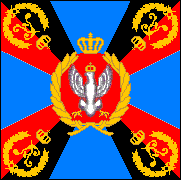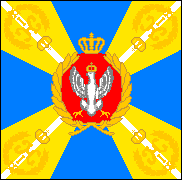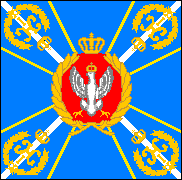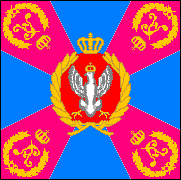|
KINGDOM OF POLAND |
|
REGIMENTAL COLORS & STANDARDS
•
1817-31 |
In the first half of the seventeenth century, the Polish-Lithuanian Commonwealth was Eastern Europe's most wealthy and powerful state. A confederated elective monarchy, it comprised most of present-day Poland, the Baltic states, East Prussia, and much of Ukraine and Belorussia. But the commonwealth's complex constitution was fatally defective. Political instability gradually undermined the state and by the middle of the eighteenth century the Commonwealth was a prey to its increasingly powerful neighbors. The independence of Poland was extinguished in the second half of the eighteenth century by Prussia, Austria and Russia in a series of three territorial partitions. The last of these, in 1795, wiped Poland from the map. The spirit of Polish independence did not die, however, and it was exploited by Napoleon who, after his decisive victory over Prussia in 1806-07, created the Duchy of Warsaw out of Prussia's recently acquired Polish territory. Though this state, to which additional territory was added after Austria's defeat in 1809, was little more than a French protectorate, it raised hopes for the restoration of a truly independent Polish kingdom. But the defeat of Napoleon crushed the hopes of Polish patriots. At the Congress of Vienna Prussia and Austria regained part of their lost Polish territories, while the core of the former duchy was fashioned into a nominally independent Kingdom of Poland in personal union with the Russian Empire. Tsar Alexander I thus became King of Poland and his younger brother, the Grand Duke Constantine, was sent to Warsaw as viceroy. Congress Poland, as the kingdom is usually called, was granted a distinctly liberal constitution. But the Tsar had little intention of abiding by his oath to this constitution and opposition to Russian rule grew rapidly after 1820, culminating in the uprising of 1830-31. This was put down by armed force in an eleven-month campaign and subsequently all vestiges of Polish independence were eradicated. In line with its supposed autonomy, Congress Poland possessed its own army, separate from the Russian establishment, with the Grand Duke Constantine as its commander. In 1817 the nine regiments of infantry were granted colors of the Russian 1813 pattern, but with the Polish white eagle and royal crowns in place of the Russian double-headed eagle and imperial crowns. A few years later, the Pioneer Battalion was granted a similar color. Tsar Alexander I's monogram appeared in the corners of the colors; in 1825 this was replaced by the monogram of Tsar Nicholas I. In 1827 the three jaeger (light infantry) regiments were also granted colors. Following the 1830-31 uprising the Polish Army was disbanded, and all these colors were abolished. |
|
|
